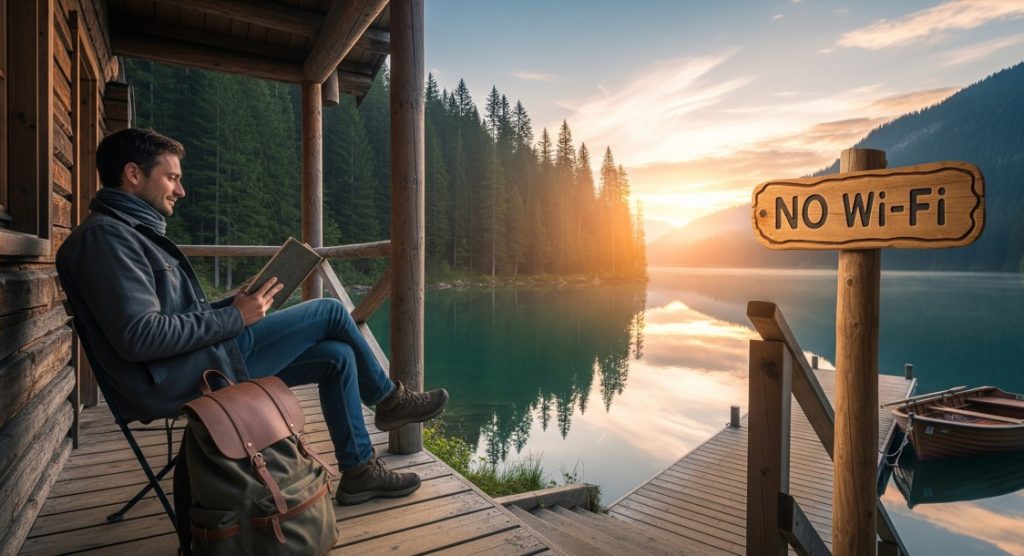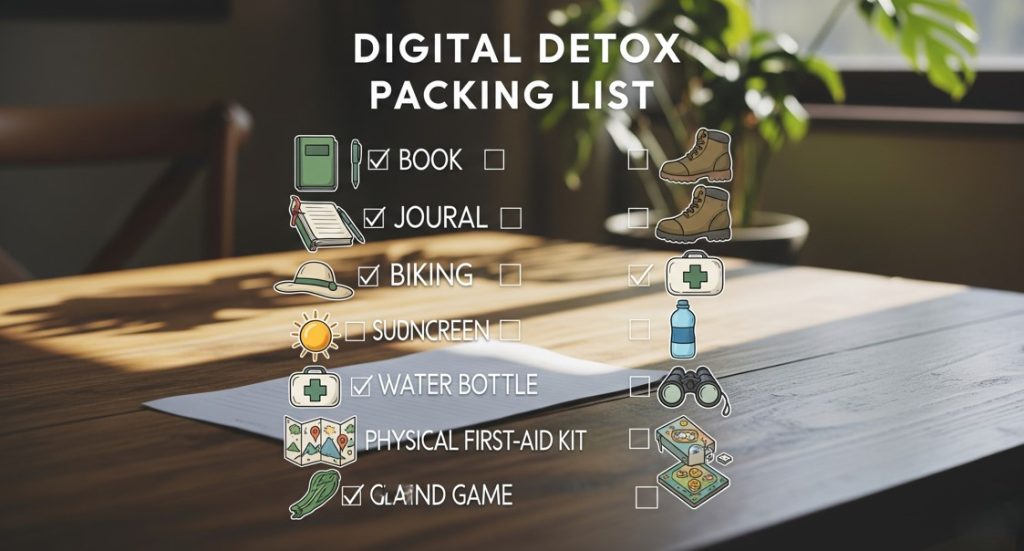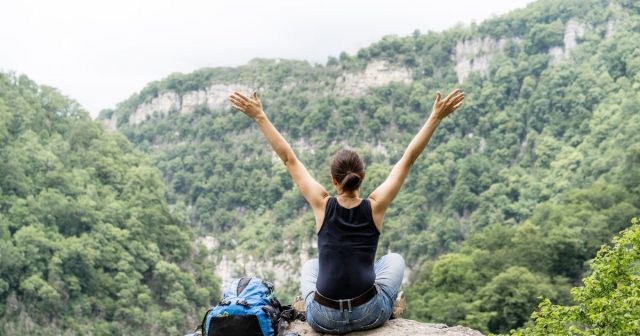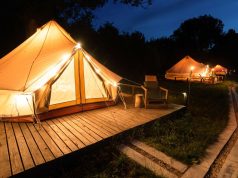In an age where notifications ping every few minutes and the pressure to stay connected is constant, digital overload can drain the joy out of travel. Imagine waking up without the urge to check email, wandering through forests without mapping apps, or reading a paperback under rustling leaves rather than scrolling through feeds. This is the promise of digital detox travel: a purposeful break from screens and a chance to rediscover the simple pleasures of exploration. Whether you have a weekend to spare or plan a multi-week adventure, unplugging abroad can recharge your creativity, sharpen your senses, and deepen your connection with the world around you.
What Is Digital Detox Travel?

Digital detox travel is the practice of intentionally limiting or turning off electronic devices—smartphones, tablets, laptops, even e-readers—while traveling. The goal is to reduce screen time in order to be fully present in your surroundings, engage authentically with local cultures, and cultivate mindfulness. Unlike a simple beach vacation where you might lounge by the water with a device in hand, a digital detox trip encourages you to leave notifications behind and embrace offline experiences. You might trade social media updates for birdwatching, GPS navigation for printed maps, and email check-ins for face-to-face conversations with fellow travelers or locals.
Key Benefits of Unplugging on the Road
Stepping away from screens offers more than just relief from constant alerts. Research shows that reducing digital distractions can lower stress hormones, improve sleep quality, and increase overall well-being. As you decline the urge to compare your journey to curated online feeds, you’ll start appreciating unscripted moments: a sudden rainstorm in a mountain village, an impromptu street-side performance, or the taste of a freshly baked pastry you discover by chance. Unplugging also fosters creativity, as your mind wanders freely without the interruption of push notifications. And when you return home, you may find that your relationships deepen, your attention span lengthens, and you carry a renewed sense of wonder into daily routines.
How to Plan Your Digital Detox Trip
1. Choose the Right Destination: Look for places with limited cell coverage or a strong culture of offline living. Remote cabins, eco-lodges, rural villages, and national parks are ideal. 2. Define Your Digital Boundaries: Decide in advance which devices you will pack and set clear rules. For example, you might bring a smartphone for emergencies but disable mobile data and social apps. Alternatively, leave your phone at home and rely on a basic camera and a paper map. 3. Set a Communication Plan: Let friends and family know your itinerary and check-in schedule. A single weekly email or a designated time slot for calls can provide reassurance without pulling you back into digital routines. 4. Research Offline-Friendly Accommodations: Seek lodging that encourages unplugging—places that offer board games, reading nooks, guided nature walks, or even communal meals. Some retreats specialize in tech-free stays and provide structured wellness programs. 5. Plan Engaging Activities: Fill your days with experiences that keep you off screens. Think hiking, kayaking, stargazing, local craft workshops, or guided cultural tours. 6. Prepare an Emergency Backup: Carry a small power bank, a printed list of local emergency numbers, a paper map, and perhaps a basic phone with limited functionality. Having a backup plan reduces anxiety about going offline.
Top 8 Destinations for Digital Detox Travel
- Iceland’s Highlands: Vast volcanic plateaus and rugged trails await far from cell towers. Sleep under the Northern Lights at remote mountain huts and disconnect beneath infinite skies.
- Patagonia, Chile: Towering peaks, glacial lakes, and sprawling national parks offer unbeatable opportunities for hiking and reflection without digital distractions.
- Bhutan’s Valleys: The Himalayan kingdom limits tourist numbers and emphasizes Gross National Happiness. Monasteries, rice terraces, and cultural rituals create an immersive analog experience.
- Japanese Countryside: Rural regions like Shikoku or the Noto Peninsula showcase traditional villages, tea ceremonies, and slow-paced coastal trails—ideal for putting gadgets aside.
- Canadian Rockies: Banff and Jasper National Parks boast scenic backcountry routes. Unplug along sparkling lakes, under old-growth forests, and beside cascading waterfalls.
- Corsica, France: Mediterranean beaches meet granite mountains. Coastal drives, hidden coves, and mountain refuges provide both adventure and solitude off the grid.
- Tasmania, Australia: World Heritage wilderness with ancient forests, wildlife-rich reserves, and campgrounds where the night sky sparkles with stars you’ve never seen in a city.
- Morocco’s Sahara Desert: Camel treks, nomadic camps, and dune-sea sunsets create a timeless atmosphere where connectivity fades and time slows to a walk.
Essential Packing List for a Digital Detox

– A basic phone or offline camera for emergencies and photos
– Printed maps, guidebooks, or a compass
– Refillable water bottle and snacks to limit reliance on online food delivery
– Journal, sketchbook, or playing cards for entertainment
– Portable charger (no data sync) and universal adapter
– Sunscreen, hat, and weather-appropriate clothing to avoid digital weather checks
Mindful Activities to Embrace Offline Travel
Start each morning with a short meditation or yoga stretch, breathing in fresh air and practicing gratitude. During the day, join a local cooking class where hands-on learning immerses you in regional flavors and traditions. Try birdwatching or botanical walks that encourage quiet observation, or bring a sketchbook to capture landscapes by hand. As night falls, indulge in stargazing—far from city light pollution, constellations appear in dazzling clarity. Finally, end the day by journaling your experiences, noting how it feels to be truly present. These simple rituals build a rhythm of awareness that lasts well beyond your trip.
Overcoming Challenges While Unplugged
Despite the rewards, unplugging can trigger anxiety or boredom—especially on the first day. Combat this by setting realistic goals: start with a short device-free afternoon before committing to several days. Share your plan with travel companions so everyone stays accountable. Keep a backup power bank hidden away for emergencies, and designate one analog item you rely on, like a pocket notebook, to ease the transition. Remember that mental discomfort is often temporary; as you acclimate, you’ll discover newfound joy in spontaneity and simple pleasures.
Conclusion
Digital detox travel invites you to step off the grid, slow down your pace, and fully immerse in the world’s natural beauty and cultural richness. By planning carefully, choosing the right destination, and embracing offline activities, you’ll return home with a clearer mind, a calmer spirit, and memories unfiltered by screens. Whether you seek solitude beneath starlit skies or authentic connections in remote villages, unplugging abroad can transform your wanderlust into a mindful, life-changing journey. So pack light, leave your notifications at home, and get ready to explore—in the truest, most present way possible.
Choose eco-friendly tours with our Guide to Ethical and Sustainable Travel.









